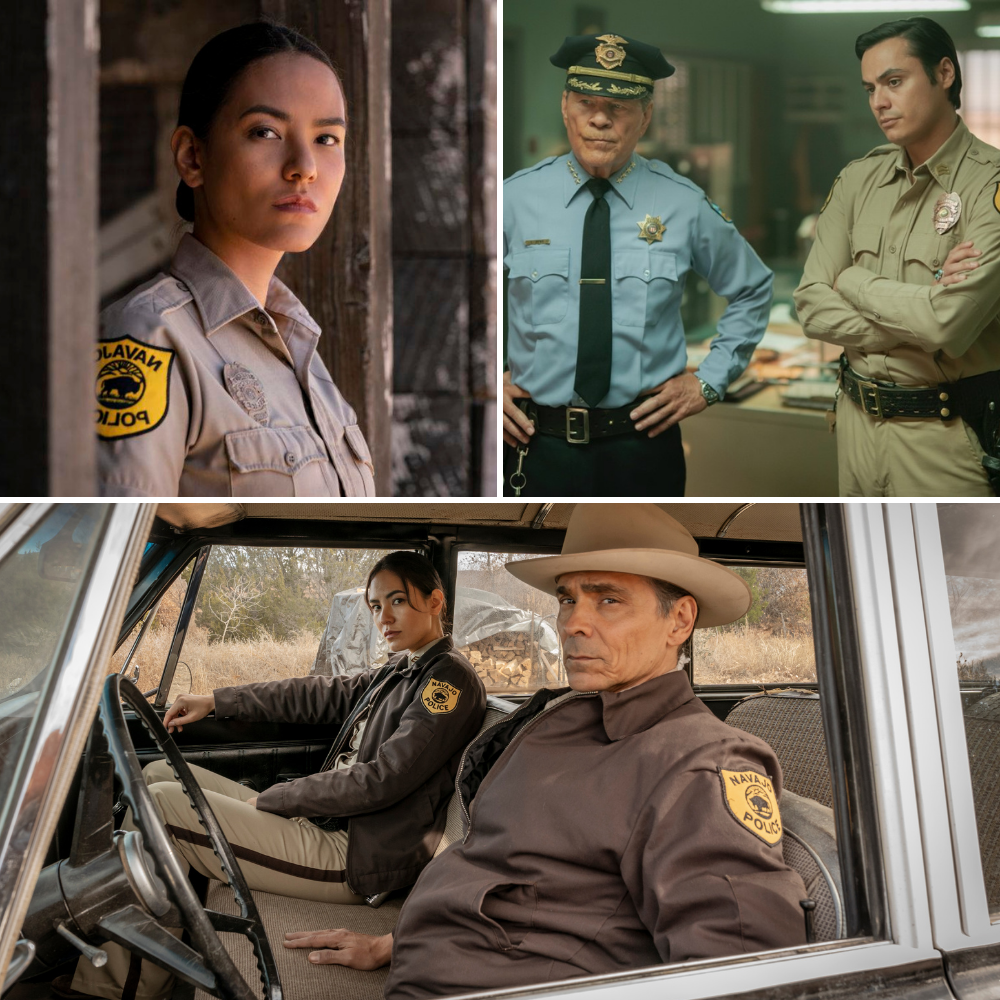
In the vast, unforgiving expanse of the Navajo Nation during the turbulent 1970s, where red rock canyons whisper ancient secrets and the wind carries echoes of forgotten rituals, a new force in television crime drama has emerged to eclipse even the brooding shadows of True Detective and the misty intrigues of Shetland. AMC+’s Dark Winds, now charging into its electrifying third season as of September 2025, isn’t just another detective saga—it’s a seismic shift, a Native-led masterpiece that plunges viewers into a world of buried horrors, cultural depth, and high-stakes chases that feel as primal as the desert itself. Starring the magnetic Zahn McClarnon as the stoic Navajo Tribal Police Lieutenant Joe Leaphorn and Kiowa Gordon as the haunted young deputy Jim Chee, this series, inspired by Tony Hillerman’s iconic Leaphorn & Chee novels, transforms the genre by weaving Indigenous perspectives into every twist, turning passive viewing into an immersive ritual of revelation.
Forget the rain-soaked cynicism of Louisiana bayous or the fog-shrouded Scottish isles; Dark Winds transplants the noir aesthetic to the sun-baked Southwest, where mysteries aren’t solved in sterile precincts but unearthed from sacred sands. Leaphorn, a veteran haunted by personal tragedies like the unsolved murder of his son, embodies unyielding resolve, his sharp eyes scanning horizons for clues in double homicides, armored car heists, and ritualistic vanishings. McClarnon, a Lakota powerhouse who’s lit up screens in Fargo and Westworld, delivers a career-defining performance—his Leaphorn is a pillar of quiet fury, grappling with moral dilemmas that pit tribal justice against encroaching federal overreach. Gordon’s Chee, a former FBI operative wrestling with spiritual abandonment and inner demons, adds layers of vulnerability and intensity, their dynamic a powder keg of mentorship, rivalry, and raw empathy that propels the narrative forward.
What elevates Dark Winds beyond genre tropes is its unflinching authenticity. Filmed across sovereign Navajo lands in New Mexico with an 85% Native crew, the series—executive produced by heavyweights like George R.R. Martin and Robert Redford—breathes life into Hillerman’s world through Indigenous writers and directors, such as Chris Eyre of Cheyenne and Arapaho heritage. Season 3, premiering to universal acclaim with Metacritic scores soaring at 84/100, dives deeper into mysticism: Leaphorn faces potential imprisonment for past sins, his marriage fracturing under the weight of secrets, while Chee confronts ghostly traumas amid escalating violence. Newcomer Jenna Elfman as a sharp FBI agent injects fresh tension, blurring lines between allies and adversaries in a plot laced with supernatural undertones—think skinwalkers lurking in the canyons, forcing characters to reconcile Navajo spirituality with modern policing.
This isn’t mere escapism; Dark Winds challenges viewers to confront colonialism’s scars, from poached artifacts to exploited reservations, all while delivering pulse-pounding action: helicopter pursuits over arid badlands, cave sieges echoing ancient lore, and interrogations crackling with cultural nuance. Critics hail it as “the most ambitious Native-led TV show ever,” with McClarnon’s portrayal earning Emmy buzz for its emotional depth. As the series hurtles toward a confirmed fourth season, it redefines the “crime game” by prioritizing lived Indigenous experiences over Hollywood gloss—proving that the most thrilling hunts aren’t for killers, but for truth in a land where the past never truly buries its dead.
In a TV landscape cluttered with recycled formulas, Dark Winds stands as a beacon of innovation, inviting global audiences to the Navajo table. Stream it on AMC+ and prepare to be swept into the storm—because once the sands shift, there’s no turning back.
